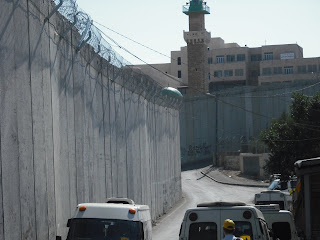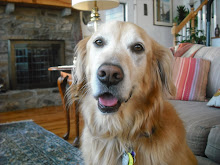I have been hesitating about writing for this blog over the past 48 hours. I think I might be more inclined to take little interest in Israel's bombing of Gaza if I had not so recently been in Israel and Palestine. If I had not had Israeli guns pointed at me as I crossed the Kalandia checkpoint and experienced the frustration of Palestinian brothers and sisters (many of whom are Christians) as they seek to live with Israeli occupation, I might be less inclined to weep at this new misery. I have been interested in our news reports compared to the news I am receiving from both Israeli and Palestinian organizations who are saddened and angered by this new assault on the people of Gaza. Here are the words of a young woman in Gaza about the attacks.
Dear all. Here's an update on whats happening here from where I am, second night of Israeli air (and sea) raids on Gaza. Israeli warships rocketed the Gazas only port only moments ago, 15 missiles exploded, destroying boats and parts of the ports. These are just initial reports over the radio. We don't know what the extent of the damage is. We do know that the fishing industry that thousands of families depend on either directly or indirectly didn't pose a threat on Israeli security The radio reporter started counting the explosions, I think he lost count after 6. At this moment we heard 3 more blasts. "I'm mostly scared of the whoosh", I told my sister, referring to the sound a missile makes before it hits. Those moments of wondering where its going to fall are agonizing. Once the whooshes and hits were over the radio reporter announced that the fish market (vacant of course) had been bombed. We just heard that 4 sisters from the family of "Ba'lousha" have been killed in an attack that targeted the mosque my their home in the northern Gaza Strip. Peace, Safa
There are more e-mails describing the chaos and misery of those who live in both the West Bank and Gaza right now. There are many issues to consider of course. Hamas' unwillingness to negotiate, the shelling of southern Israel by Hamas rockets, the starvation of the people of Gaza by Israeli blockages of relief shipments, and the ongoing siege of Gaza for months now, and the overall occupation and demands of Israel on the Palestinian people. It is a complicated situation. Perhaps I will be able to write more about my own experience in Israel and Palestine but right now I am aching for the people whose lives continue to be ripped apart - both Palestinians and Israelis. Praying for peace comes quickly now; with each breath, as I see the faces of those I met and spent time with. I encourage this prayer among us all.
.JPG)
.JPG)
.JPG)
.JPG)

 Christmas Pageant at Christ Episcopal Church
Christmas Pageant at Christ Episcopal Church
 I've spent time just "visiting" with wonderful friends here. Catching up on what is happening in the lives of the people who are part of God's family and mine in this place makes me feel old! But it also makes me extraordinarily grateful for God's grace. I came to Holy Trinity in 1992 with many doubts about myself and ministry. The people of this parish were a healing presence to me and they "loved" me back into ministry.
I've spent time just "visiting" with wonderful friends here. Catching up on what is happening in the lives of the people who are part of God's family and mine in this place makes me feel old! But it also makes me extraordinarily grateful for God's grace. I came to Holy Trinity in 1992 with many doubts about myself and ministry. The people of this parish were a healing presence to me and they "loved" me back into ministry. 




 Sculpture of St. Francis at St. Damiano
Sculpture of St. Francis at St. Damiano
 The Church of San Francesco in Assisi, Italy
The Church of San Francesco in Assisi, Italy Pieta
Pieta




 The Annunciation by Fra Angelico - c. 1432
The Annunciation by Fra Angelico - c. 1432
 The Cat's Perch at the Abbey!
The Cat's Perch at the Abbey!  The Olive Trees of Tuscany
The Olive Trees of Tuscany




 St. Paul's Within the Walls
St. Paul's Within the Walls This is a wonderful icon that was on the altar at St. Paul's Within the Walls yesterday morning - it is Sts. Peter and Paul. Tomorrow after doing some work in the internet café we are going to the Coliseum, hoping not to get eaten by any lions!
This is a wonderful icon that was on the altar at St. Paul's Within the Walls yesterday morning - it is Sts. Peter and Paul. Tomorrow after doing some work in the internet café we are going to the Coliseum, hoping not to get eaten by any lions!












